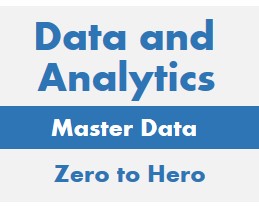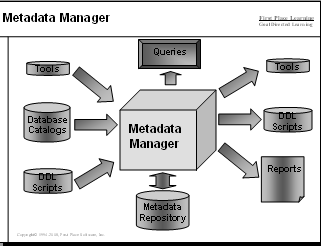


Metadata is one of the important keys to the success of the data and analytics effort. Metadata management answers these questions:
Metadata is your control panel to the data warehouse. It is data that describes the data and analytics system:
Metadata is often used to control the handling of data and describes:
The power of metadata is that enables data warehousing personnel to develop and control the system without writing code in languages such as: Java, C# or Python. This saves time and money both in the initial set up and on going management.
Data and Analytics has specific metadata requirements. Metadata that describes tables typically includes:
Metadata describes columns within tables:
data and analytics metadata is best managed through a combination of people, process and tools.
The people side requires that people be trained in the importance and use of metadata. They need to understand how and when to use tools as well as the benefits to be gained through metadata.
The process side incorporates metadata management into the data and analytics life cycle. As the life cycle progresses metadata is entered into the appropriate tool and stored in a metadata repository for further use.
Metadata can be managed through individual tools:
Metadata can be managed through a shared repository that combines information from multiple sources.

The metadata manager can be purchased as a software package or built as "home grown" system. Many organizations start with a spreadsheet containing data definitions and then grow to a more sophisticated approach.
Metadata can be obtained through a manual process of keying in metadata or through automated processes. Scanners can extract metadata from text such as SQL DDL or COBOL programs. Other tools can directly access metadata through SQL catalogs and other metadata sources.
Picking the appropriate metadata extract tools is a key part of metadata management.
Many data modeling tools include a metadata extract capability - otherwise known as "reverse engineering". Through this tool, database information about tables and columns can be extracted. The information can then be exported from the data modeling tool to the metadata manager.
Infogoal.com is organized to help you gain mastery.
Examples may be simplified to facilitate learning.
Content is reviewed for errors but is not warranted to be 100% correct.
In order to use this site, you must read and agree to the
terms of use, privacy policy and cookie policy.
Copyright 2006-2020 by Infogoal, LLC. All Rights Reserved.
